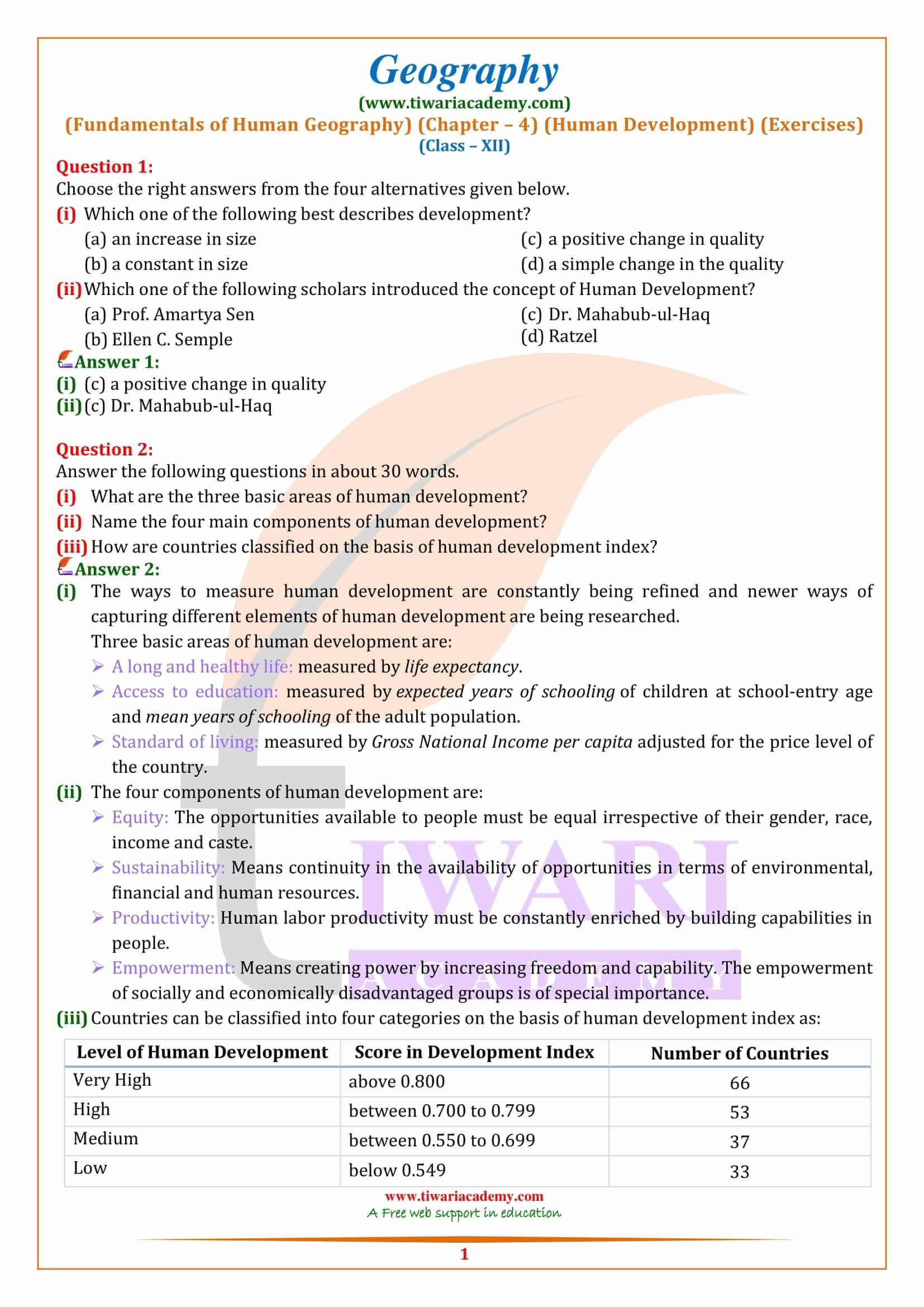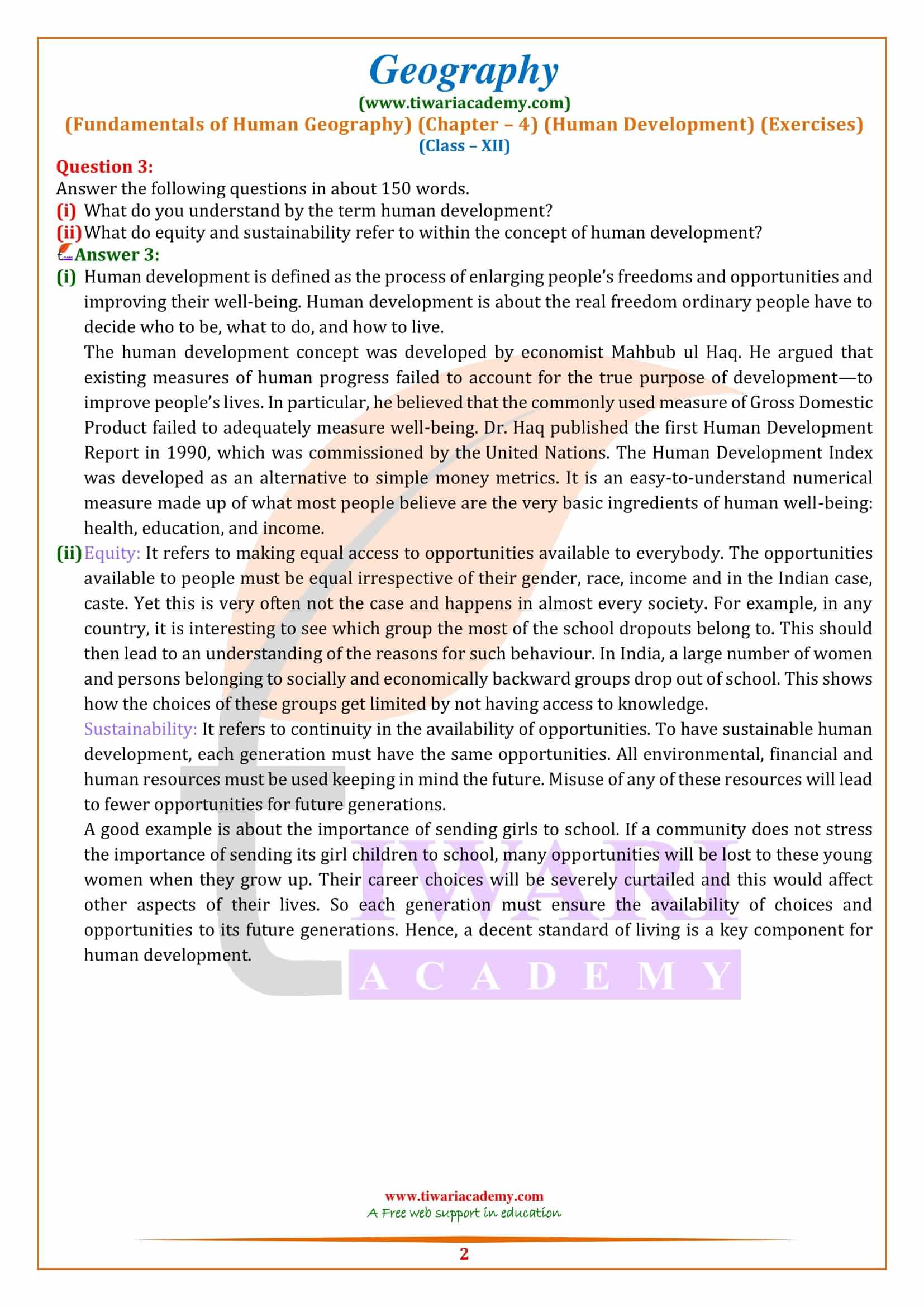NCERT Solutions for Class 12 Geography Chapter 4 Human Development in English Medium and Hindi Medium updated for CBSE session 2025-26. Get here all important question answers and MCQ of 12th Geography Fundamentals of Human Geography unit 2 chapter 4 with explanation.
NCERT Solutions for Class 12 Geography Chapter 4
Class 12 Geography Chapter 4 Human Development Question Answers
What are the three basic areas of human development?
The ways to measure human development are constantly being refined and newer ways of capturing different elements of human development are being researched.
Three basic areas of human development are:
- A long and healthy life: measured by life expectancy.
- Access to education: measured by expected years of schooling of children at school-entry age and mean years of schooling of the adult population.
- Standard of living: measured by Gross National Income per capita adjusted for the price level of the country.
Class 12 Geography Chapter 4 MCQ
Which one of the following best describes development?
Which one of the following scholars introduced the concept of Human Development?
Name the four main components of human development?
The four components of human development are:
- Equity: The opportunities available to people must be equal irrespective of their gender, race, income and caste.
- Sustainability: Means continuity in the availability of opportunities in terms of environmental, financial and human resources.
- Productivity: Human labor productivity must be constantly enriched by building capabilities in people.
- Empowerment: Means creating power by increasing freedom and capability. The empowerment of socially and economically disadvantaged groups is of special importance.
How are countries classified on the basis of human development index?
Countries can be classified into four categories on the basis of human development index as:
Level of Human Development/ Score in Development Index/ Number of Countries
Very High /above 0.800/66
High/between 0.700 to 0.799/53
Medium/between 0.550 to 0.699/37
Low/below 0.549/33
What do equity and sustainability refer to within the concept of human development?
Equity: It refers to making equal access to opportunities available to everybody. The opportunities available to people must be equal irrespective of their gender, race, income and in the Indian case, caste. Yet this is very often not the case and happens in almost every society. For example, in any country, it is interesting to see which group the most of the school dropouts belong to. This should then lead to an understanding of the reasons for such behaviour.
In India, a large number of women and persons belonging to socially and economically backward groups drop out of school. This shows how the choices of these groups get limited by not having access to knowledge.
Sustainability: It refers to continuity in the availability of opportunities. To have sustainable human development, each generation must have the same opportunities. All environmental, financial and human resources must be used keeping in mind the future. Misuse of any of these resources will lead to fewer opportunities for future generations.
A good example is about the importance of sending girls to school. If a community does not stress the importance of sending its girl children to school, many opportunities will be lost to these young women when they grow up. Their career choices will be severely curtailed and this would affect other aspects of their lives. So each generation must ensure the availability of choices and opportunities to its future generations. Hence, a decent standard of living is a key component for human development.



